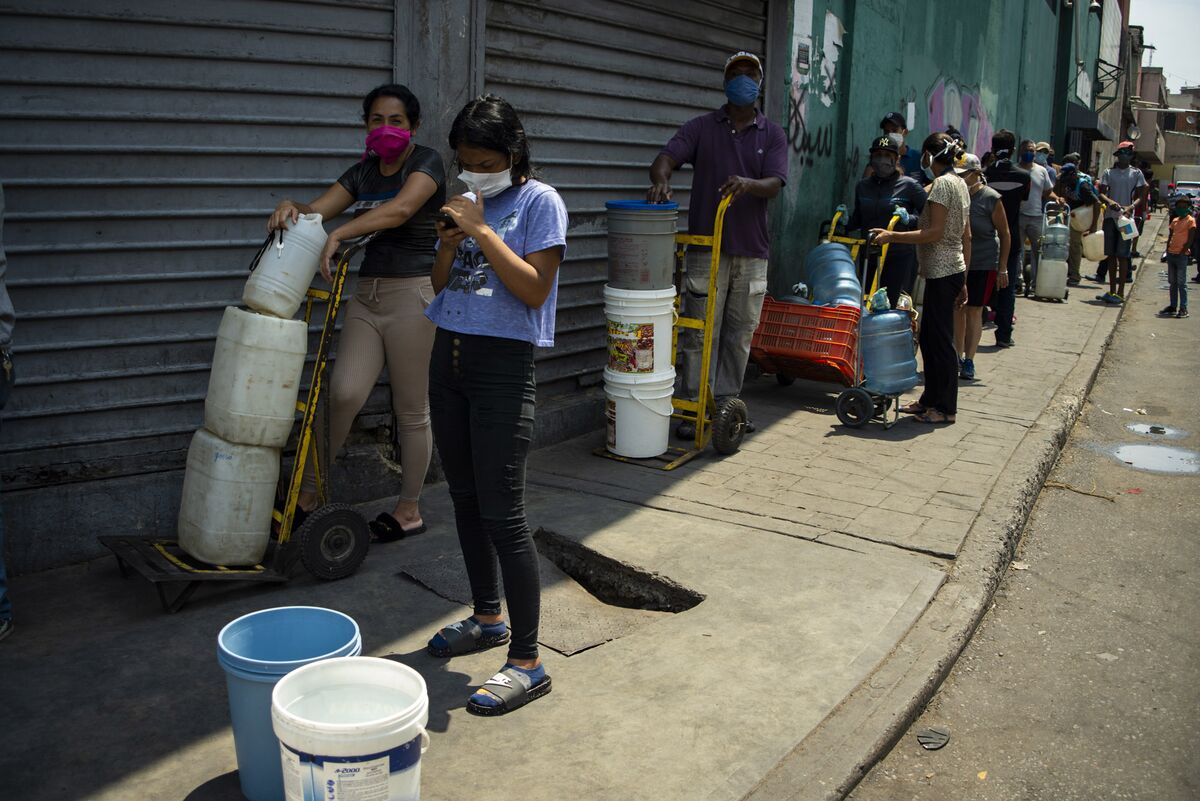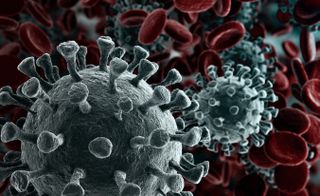No, he's not crazy, far from it. He's just recognizing something hardly anyone else has the balls to say: life can and must go on. If we don't at least have a hope for return to normalcy and soon, the spiritual and psychological effects on many in society will be far worse than the virus."We have to reopen our country, it cannot go on like this for months and months", said President Donald Trump during a press briefing on Saturday April 4.
"We pay people and here people have to go back to work," he added.
"Sports fans want to go to their baseball, soccer, golf games," he also said.
This guy is crazy ! It is necessary to lock him in an asylum with a strait-jacket.
----------
300,000 cases recorded in the United States, more than 8,000 deaths according to John Hopkins University.
That will be 308,000 fewer spectators for baseball games, mister Trump.
Yes I know, "Whatever the human cost" ...
--------------------------------------------

You are using an out of date browser. It may not display this or other websites correctly.
You should upgrade or use an alternative browser.
You should upgrade or use an alternative browser.
General / Off-Topic The safest place
- Thread starter Robin of Spiritwood
- Start date
- Status
- Thread Closed: Not open for further replies.
I'm officially urined-off with Covid-19 now...

 www.rollingstone.com
www.rollingstone.com
... how dare those nasty viruses attack Marianne...
(.. now, where did I leave my Mars bar? )

Marianne Faithfull Hospitalized After Testing Positive for Coronavirus
Marianne Faithfull is currently in a London hospital after testing positive for the coronavirus, Rolling Stone has confirmed.
... how dare those nasty viruses attack Marianne...
(.. now, where did I leave my Mars bar? )
I wont lie, I havent looked, but its the right time of year for it. General rule of thumb is the military elements tend to play a little longer after the exercise ends in a year after a actual disaster as they tend to do a "lessons learnt' type trainex.
Could also be part of the ramp up of counter-narcotics, or the other other things I mentioned in my original debunking of tinfoil hattery.

Trump: US to deploy anti-drug Navy ships near Venezuela
MIAMI (AP) — President Donald Trump announced Wednesday that Navy ships are being moved toward Venezuela as his administration beefs up counter-narcotics operations in the Caribbean following a U.S. drug indictment against Nicolás Maduro.
Yep, looks like this might be it.
Today the U.S. is launching an enhanced counternarcotics operation in the Western Hemisphere,” President Donald Trump said in the daily press briefing at the White House. “We are deploying additional Navy destroyers, combat ships, aircraft and helicopters, Coast Guards cutters and air force surveillance aircraft, doubling our capabilities in the region.”
Increased Military action, as observed.

Trump Tightens Pressure on Maduro as Virus Threatens Disaster
President Donald Trump is stepping up his campaign to oust Venezuela’s Nicolas Maduro with the coronavirus pandemic and plunging oil prices threatening to worsen a humanitarian disaster years in the making.
Against Venezuela. As proffered.
globalnews.ca
U.S. indicts Venezuelan leader Nicolas Maduro, top officials on 'narco-terrorism' charges
Good thing you are here to debunk .... uh ... what exactly did you debunk?
We are saying the same thing.
If not for the Cruise ship industry I think my country would be well on it's way to flat-lining infections. Curiously, our Border Protection minister who was so keen on "stopping the boats" early in his career is silent about this new phenomenon.Is that the name for the swarm of Covid case refugees that are about to land on my shores?
(It's catchy)
If not for the Cruise ship industry I think my country would be well on it's way to flat-lining infections. Curiously, our Border Protection minister who was so keen on "stopping the boats" early in his career is silent about this new phenomenon.
Because fully HALF our cases came from cruise ship passengers.
We are in 2020 ...
-------------------------------------------------

What's this we stuff ???
Australia. I think there needs to be some serious regulations put into the operation of cruise ships because it is clear that they are a gently caressing biological menace. Even before the current crisis they were famous for outbreaks.
Couldn't agree more.
If it were planes, they'd all be grounded till this was solved.
In other news, antibody testing got FDA approval. That could be quite a useful tool in the fight.
Edit Here's the article in STAT

CDC launches studies to get more precise count of undetected Covid-19 cases
The CDC has begun preliminary studies to try to flesh out the portion of #Covid19 cases that have evaded detection.
Last edited:
In other news, antibody testing got FDA approval. That could be quite a useful tool in the fight.
But, but, but...
Last edited:
Called up the chief surgeon at our main hospital, an old friend. He didn't know about the autoclave paper thing, but they have masks. Nevertheless, they'll start harvesting used instrument and drape package wrap instead of discarding it, might need it later. He's dubious about breathing through it, and after a career of obstructed inhaling you can't blame the man.
Nurses at my centre say they have some wrap, and we can try improvising tomorrow. We pack and sterilize small amounts of gauze everyday in the little autoclave, so we could start harvesting there.
Nurses at my centre say they have some wrap, and we can try improvising tomorrow. We pack and sterilize small amounts of gauze everyday in the little autoclave, so we could start harvesting there.
We really need to stop buying stuff from China, I would rather get it locally as it would bring jobs back.AHA!
Medical grade sterilizer paper will block microorganisms from penetrating, permit steam (or air) to go through it, is sterilizable and reusable, and is cheaper than dirt.
Trial drug can significantly block early stages of COVID-19 in engineered human tissues
An international team has found a trial drug that effectively blocks the cellular door SARS-CoV-2 uses to infect its hosts.
www.sciencedaily.com
This is a trial of a novel idea. Intriguing.
Ok, the virus particle has an S protein, which is the lumpy poking out bits all over it, seen here:

It's like a key.
Those bits stick to a blob of protein on our cells surfaces, known as ACE2. That's like the corresponding padlock.
The idea is to flood the body with lots of ACE2, so that the virus gets locked up bound to that instead. This would create particle complexes in the tissue fluid, which might be variable sized depending on how many virions stick to one molecule of the ACE2. As long as they are stuck there, they cannot enter our cells.
This is called a decoy receptor therapy.
It is clever, but this is most likely not going to work outside of the test tube.
ACE2 isn't an inert substance, it does stuff. If we flood our bloodstream with it, it will relentlessly start its biochemical work. Like putting out a wood fire by offering it gasoline to burn instead of the wood.
If we give inadequate doses, the virus will still operate.
We would have to, somehow, pick the perfect amount to prevent either failure or toxicity. Or give modest dosages to suppress virus activity till immunity kicks in. But that brings in other issues too.
What happens to the clumps of virus when our immuneglobulin starts to stick to that? It is one thing to aggregate around one virion at a time. Quite another to get big chunks of Ig attached to crowds of virions - the size of those complexes will be an issue, and can cause membrane problems like immune complex deposition diseases.
If they can bypass that problem, it could be safe enough to go to trial. How? Well, we might have to modify the ACE2 substance so that it doesn't have biochemical activity in humans, but still binds to the virus for starters. And it needs to only bind to one or 2 virions at a time. Theoretically, doable.
Last edited:
Hmm, in the uk, I’m reading in media that many people are breaking rules by being on our local beach. But live webcam and local photos show otherwise.
I suspect we’re being setup to blame ourselves rather than our late responding gov.
Of course there are some people who believe the rules don’t apply to them, but I smell scape goat.
I suspect we’re being setup to blame ourselves rather than our late responding gov.
Of course there are some people who believe the rules don’t apply to them, but I smell scape goat.
Don't mix it all up.So the massive rioting and urban destruction I've been watching in the news for the past 6 months was all fictional?
I was talking about civilized regarding the health.
People demonstrating and destroying public goods are also fully protected for the health.
----------------------------------------------
He is very very crazy !No, he's not crazy, far from it. He's just recognizing something hardly anyone else has the balls to say: life can and must go on. If we don't at least have a hope for return to normalcy and soon, the spiritual and psychological effects on many in society will be far worse than the virus.
Baseball, soccer and golf, with the gathering of thousands of infected and potentially fatal people, are not essential for the continuation of the life.
----------------------------------------------------------
Went to our old neighbor who now temporary lives with us, and there was no power to the house, a smell of rotten flesh was inside the house and we discovered that the freezer was off.
I open the door and all the meat was rotten and maggots was in the meat? How the hack can that happen? a closed door and it was sealed in plastic? I know that the decaying process is starting really fast in the heat but this was a surprise.
I open the door and all the meat was rotten and maggots was in the meat? How the hack can that happen? a closed door and it was sealed in plastic? I know that the decaying process is starting really fast in the heat but this was a surprise.
Last edited:
How this man didn’t have the idea to throw the meat out before it rots in his freezer ?Went to our old neighbor who now temporary lives with us, and there was no power to the house, a smell of rotten flesh was inside the house and we discovered that the freezer was off.
I open the door and all the meat was rotten and maggots was in the meet? How the hack can that happen? a closed door and it was sealed in plastic? I know that the decaying process is starting really fast in the heat but this was a surprise.
---------------------------------------------------------------------
I open the door and all the meat was rotten and maggots was in the meet? How the hack can that happen? a closed door and it was sealed in plastic? I
Fly eggs were on the meat when it went into the container. Probably while it was being prepped for freezing?
It's just good that A) not the old neighbour and B) not the zombie apocalypse..
Frankly disgusting !Fly eggs were on the meat when it went into the container. Probably while it was being prepped for freezing?
-------------------------------------------------------
That’s disgusting actuallyFly eggs were on the meat when it went into the container. Probably while it was being prepped for freezing?
It's just good that A) not the old neighbour and B) not the zombie apocalypse..
well he didn’t expect the power to be cut, but we should have checked it sooner.
- Status
- Thread Closed: Not open for further replies.
